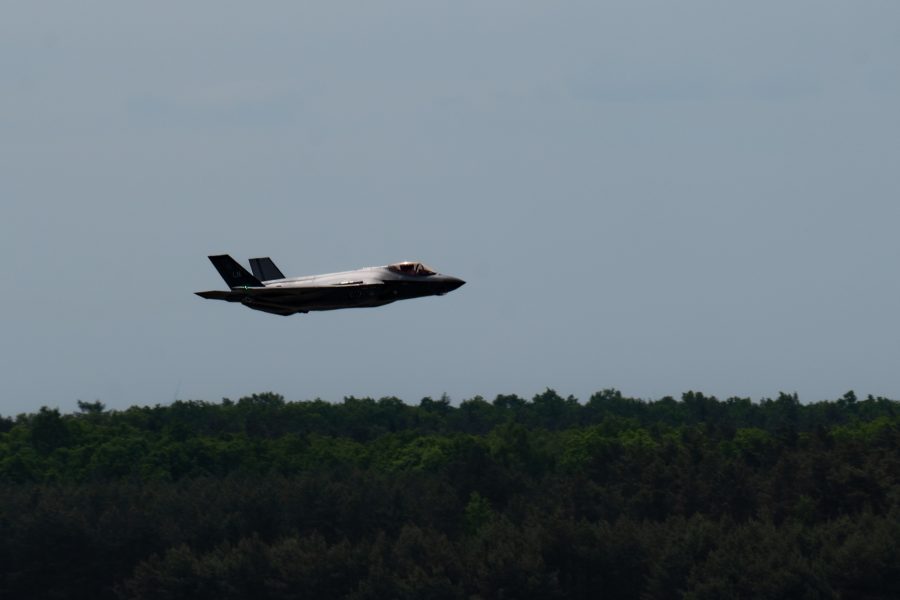Stealthy U.S. Air Force F-35s, accompanied by NATO allies’ aircraft, are flying across Europe in an air and missile defense exercise, as the threat from ballistic missiles, cruise missiles, and drones has grown throughout the world, U.S. Air Forces in Europe said.
The U.S.-led exercise, dubbed Astral Knight, runs from May 6-21. U.S. Air Forces in Europe (USAFE) said “recent conflicts, such as those in Ukraine and Israel,” stressed the urgency of promptly countering aerial threats. NATO has also put a renewed focus on conducting more realistic training scenarios since Russia’s invasion of Ukraine brought the reality of a large-scale war to Europe.
The training involves live-fly and simulated combat operations involving some 50 U.S. aircraft over Poland and the Baltic nations. U.S. aircraft are operating out of Poland, Lithuania, and Romania. Six NATO countries, including Estonia, Latvia, Lithuania, Poland, the U.K., and the U.S., are participating in the exercise, with personnel from Denmark and Greece observing.
U.S. aircraft include:
- F-35 Lightning IIs from RAF Lakenhealth, U.K.
- F-16 Fighting Falcons from Aviano Air Base, Italy, and Spangdahlem Air Base, Germany
- HH-60G Pave Hawk helicopters from Aviano Air Base, Italy
- KC-135 Statrotanker aerial refueling aircraft from the Kansas Air National Guard and the 100th Air Refueling Wing at RAF Mildenhall, U.K.
- MQ-9 Reaper drones from Whiteman Air Force Base, Mo.
- RQ-4 Global Hawk drones from Grand Forks Air Force Base, N.D.
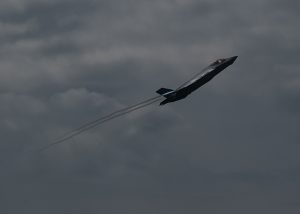
A U.S. Air Force F-35 Lighting II assigned to the 495th Fighter squadron arrives at Powidz Air Base, Poland for Astral Knight 24 at, May 10th, 2024. AK24’s integrated air and missile defense is the coordinated cooperation of capabilities and overlapping operations to defend friendly forces, protect the joint force, and enable freedom of action by negating an enemy’s ability to create adverse effects from their air and missile capabilities. (U.S. Air Force photo by Staff Sgt. Gaspar Cortez)
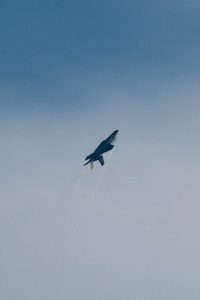
U.S. Air Force F-35 Lighting II assigned to the 495th Fighter Squadron departs for exercise Astral Knight 2024 at RAF Lakenheath, England, May 10th, 2024. AK24 is U.S. European Command’s capstone integrated air and missile defense exercise focused on incremental development of theater-wide coalition integrated air and missile defense capabilities. (U.S. Air Force photo by Airman 1st Class Alexander Vasquez)
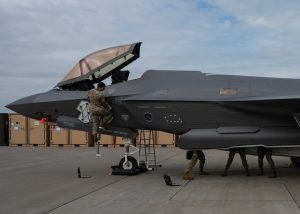
U.S. Air Force Airmen assigned to the 495th Fighter Generation Squadron conduct post flight checks on an F-35A Lightning II assigned to the 495th Fighter Squadron at Powidz Air Base, Poland for Astral Knight 24 at, May 10th, 2024. AK24 is designed to enhance movement, maneuverability, and integration between U.S. Allies and partners which are foundational to United States Air Forces in Europe-Air Forces Africa’s Agile Combat Employment strategy. (U.S. Air Force photo by Staff Sgt. Gaspar Cortez)
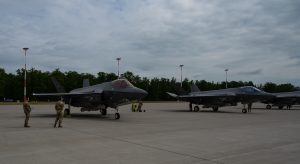
U.S. Air Force F35A Lightning II’s assigned to the 495th Fighter Squadron arrive at Powidz Air Base, Poland for Astral Knight 24 at, May 10th, 2024. AK24 is designed to enhance movement, maneuverability, and integration between U.S. Allies and partners which are foundational to United States Air Forces in Europe-Air Forces Africa’s Agile Combat Employment strategy. (U.S. Air Force photo by Staff Sgt. Gaspar Cortez)
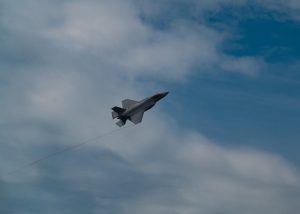
A U.S. Air Force F-35 Lighting II assigned to the 495th Fighter squadron arrives at Powidz Air Base, Poland for Astral Knight 24 at, May 10th, 2024. AK24 incorporates offensive and defensive measures across multiple components to create a comprehensive joint and combined force capable of preventing an enemy from employing its offensive air and missile weapons. (U.S. Air Force photo by Staff Sgt. Gaspar Cortez)
“Recent events show our most probable threats today and in the foreseeable future could target our main operating bases, making IAMD (Integrated Air and Missile Defense) and ABAD (Air Base Air Defense) that much more important,” James Shaw, USAFE-AFAFRICA’s Integrated Air and Missile Defense deputy division chief, said in the release.
The F-35s, based at RAF Lakenhealth, U.K., were deployed for the exercise. Four Lakenhealth F-35s were already forward deployed to Poland as part of the U.S. commitment to safeguard the skies over NATO’s eastern flank, though those aircraft are not slated to participate in the exercise. The fifth-generation stealthy jets are a particularly tough test for air defense systems.
Both NATO as a whole and the U.S. have conducted a series of exercises involving fighters and bombers to bolster the region’s sovereignty, as the alliance has sought to strengthen itself after Russia’s invasion of Ukraine.
While Ukraine is not yet a member of NATO, the alliance’s secretary general has stated that it is “inevitable” for Kyiv to join in the future, though that will not happen during the active conflict.
Russian attacks that have stressed Ukraine’s air defenses with relatively cheap Iranian-designed drones, Iran’s massive missile and drone attack on Israel, and at least 170 drone, rocket, and missile attacks on U.S. troops in Iraq, Syria, and Jordan since October have reinforced the critical need for such an exercise, USAFE noted in a press release on the exercise.
Improving NATO’s IAMD has been a top priority of Gen. James B. Hecker, who leads NATO Allied Air Command and U.S. Air Forces in Europe-Air Forces Africa, especially with the proliferation of drone attacks. Israel’s recent successful defense of over 300 ballistic missiles, cruise missiles, and drones was supported by the U.S. and coalition partners, allowing Israel to more effectively employ its multi-layered, sophisticated air and missile defense systems.
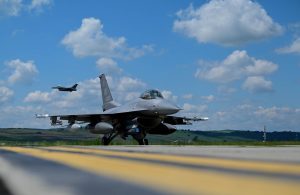
A U.S. Air Force F-16 Fighting Falcon assigned to the 555th Fighter Generation Squadron arrives at Câmpia Turzii, Romania, for exercise Astral Knight 24, May 10, 2024. AK24 is U.S. European Command’s capstone integrated air and missile defense exercise focused on incremental development of the theater-wide coalition IAMD capabilities. U.S. Air Force photo by Senior Airman Raya Feltner
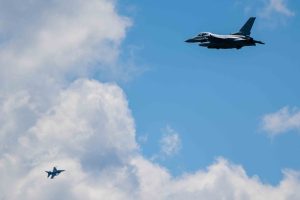
Two U.S. Air Force F-16 Fighting Falcons assigned to the 31st Fighter wing arrive at Câmpia Turzii, Romania, May 10, 2024 in support of Exercise Astral Knight 24. AK24 is a multinational exercise designed to enhance interoperability between the U.S. and its NATO Allies. (U.S. Air Force photo by Airman 1st Class Synsere Howard)
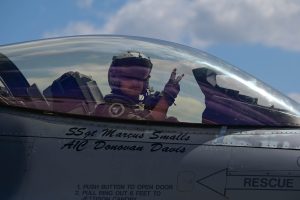
A U.S. Air Force pilot assigned to the 555th Fighter Squadron arrives at Câmpia Turzii, Romania, for exercise Astral Knight 24, May 10, 2024. AK24 is U.S. European Command’s capstone integrated air and missile defense exercise focused on incremental development of the theater-wide coalition IAMD capabilities. (U.S. Air Force photo by Senior Airman Raya Feltner)
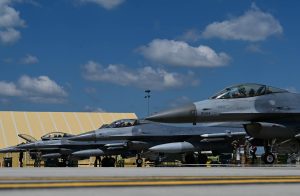
U.S. Air Force F-16 Fighting Falcons assigned to the 555th Fighter Generation Squadron arrive at Câmpia Turzii, Romania, for exercise Astral Knight 24, May 10, 2024. During this exercise, participating Allied nations will test deployment and sustainment of IAMD assets while exercising applicable area air defense plans of enhanced Forward Presence forces and distributed air operations. (U.S. Air Force photo by Senior Airman Raya Feltner)
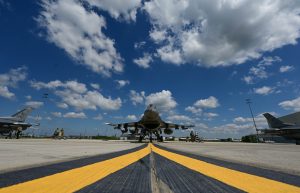
U.S. Air Force F-16 Fighting Falcons assigned to the 555th Fighter Generation Squadron arrive at Câmpia Turzii, Romania, for exercise Astral Knight 24, May 10, 2024. During this exercise, participating Allied nations will test deployment and sustainment of IAMD assets while exercising applicable area air defense plans of enhanced Forward Presence forces and distributed air operations. (U.S. Air Force photo by Senior Airman Raya Feltner)
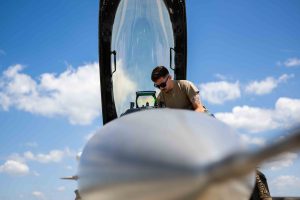
U.S. Air Force Senior Airman Chancelor Jackson, 555th Fighter Generation Squadron F-16 Assistant dedicated crew chief, conducts post-flight inspection at Câmpia Turzii, Romania, May 10, 2024 in support of Exercise Astral Knight 24. During exercises like AK24, U.S. forces sharpen their ability to deploy capable, credible forces to operate from strategic locations enabled by strong regional partnerships. (U.S. Air Force photo by Airman 1st Class Synsere Howard)
For Hecker, recent events—even before Iran’s attack on Israel—highlighted the “need for a very sophisticated integrated air and missile defense system,” he said at AFA’s Warfare Symposium in February. “That’s something that we need to continue to get better at.”
USAFE has put a renewed focus on air defense and as well countering it, including practicing taking out anti-air systems that could be used against the U.S. and its partners if necessary.
Astral Knight will “focus on testing the deployment and sustainment of IAMD assets and capabilities while exercising defense plans for distributed air operations” by using the USAF’s Agile Combat Employment concept, USAFE said. Operational control of some U.S. assets and personnel will also be transferred to NATO authority.
“Astral Knight demonstrates the collective defense capabilities of NATO allies and partners across Europe,” Hecker said in a statement. “By fostering early collaboration and integration in air and missile defense efforts among USAFE-AFAFRICA and NATO nations, we enhance our ability to deter and respond effectively to shared threats.”
The training is part of the Department of Defense’s Large Scale Global Exercise 2024 which runs through June and complements NATO’s separate Steadfast Defender exercise. A component of the Steadfast Defender series called Swift Response began its airborne phase on May 7, with paratroopers from the U.S, Spain, Hungary, and Italy commencing their training in Sweden, which marks Sweden’s inaugural participation in a NATO exercise since becoming a member nation in March.
“Presence matters. You have to be with your allies,” Air Force Lt. Gen. Steven Basham, the deputy commander of U.S. European Command, said during a May 10 event hosted by the Foundation for Defense of Democracies. “To be able to integrate, you have to be with your allies to campaign, to exercise. And by the way, it can’t be just episodic where you just come in at the last minute because that’s actually not working toward deterrence.”

U.S. Air Force Capt. Edward Turos, 351st Air Refueling Squadron pilot, parks a KC-135 Stratotanker during Astral Knight 2024 at Spangdahlem Air Base, Germany, May 10, 2024. AK24 participants will test deployment and sustainment of integrated air and missile defense assets and capabilities, while exercising applicable area air defense plans of enhanced forward presence forces and distributed air operations. (U.S. Air Force photo by Staff Sgt. Jesenia Landaverde)
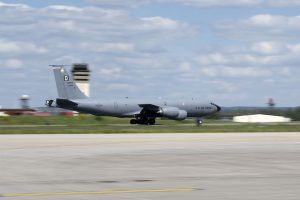
A U.S. Air Force KC-135 Stratotanker from the 100th Air Refueling Wing, Royal Air Force Mildenhall, England, lands during Astral Knight 2024 at Spangdahlem Air Base, Germany, May 10, 2024. AK24 participants will test deployment and sustainment of integrated air and missile defense assets and capabilities, while exercising applicable area air defense plans of enhanced forward presence forces and distributed air operations. (U.S. Air National Guard photo by Master Sgt. Rafael D. Rosa)
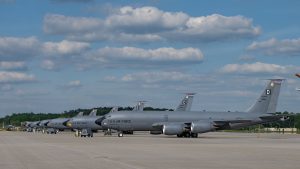
Six U.S. Air Force KC-135 Stratotankers from the 100th Air Refueling Wing, Royal Air Force Mildenhall, England, sit on the flightline during Astral Knight 2024 at Spangdahlem Air Base, Germany, May 10, 2024. AK24 enables U.S. Air Forces in Europe to test Agile Combat Employment concepts and serve as the venue to certify units as USAFE-AFAFRICA ACE fully operationally capable. (U.S. Air Force photo by Staff Sgt. Jesenia Landaverde)
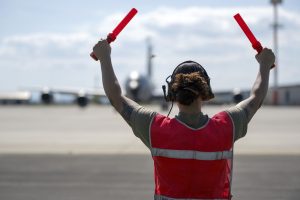
U.S. Air Force Senior Airman Chloe Garza, 100th Aircraft Maintenance Squadron aerospace propulsion specialist, marshals a KC-135 Stratotanker during Astral Knight 2024 at Spangdahlem Air Base, Germany, May 10, 2024. AK24 is U.S. European Command’s capstone integrated air and missile defense exercise focused on incremental development of theater-wide coalition IAMD capabilities. (U.S. Air National Guard photo by Master Sgt. Rafael D. Rosa)

A U.S. Air Force KC-135 Stratotanker from the 100th Air Refueling Wing, Royal Air Force Mildenhall, England, prepares to land during Astral Knight 2024 at Spangdahlem Air Base, Germany, May 10, 2024. AK24 is U.S. European Command’s capstone integrated air and missile defense exercise focused on incremental development of theater-wide coalition IAMD capabilities. (U.S. Air National Guard photo by Master Sgt. Rafael D. Rosa)
